ROPE (1948) is Alfred Hitchcock’s murder/suspense film that showcases the killing in its second shot. ROPE is often described as having no editing…a film that plays out in real-time…but it had to hide the cuts due to the 10-minute film reel limits of the day. On further examination…Hitchcock’s gem actually contains 10 edits. Five of them are hidden as the camera lens is filled by foreground objects. The other five edits are regular hard cuts that not many people either realize or acknowledge. I’ve isolated all 10 edits in the video below so you can learn from the Master of Suspense on how to hide your edits without losing momentum in your story.
I always knew that some of the cuts were hidden by camera wipes…but never realized there were 5 hard cuts hiding in plain view! It’s also interesting to note that the 10 edits switch between hard cut and dissolve in an alternating pattern. Was this done to maintain a subconscious rhythm to the editing? Was it accidental? I would find it hard to believe that Hitchcock left anything to chance…
BONUS: Not many people caught the Hitchcock cameo in ROPE. Here is the secret revealed…a neon sign of his silhouette in the background.
An amazing analysis of the film can be found here courtesy of Peter J. Dellolio.
If this film was edited digitally today…it would look like this:
Do you know of any other films that hide their edits or create interesting tricks to keep the story moving forward? Please share them in the comments below!
Until next time…

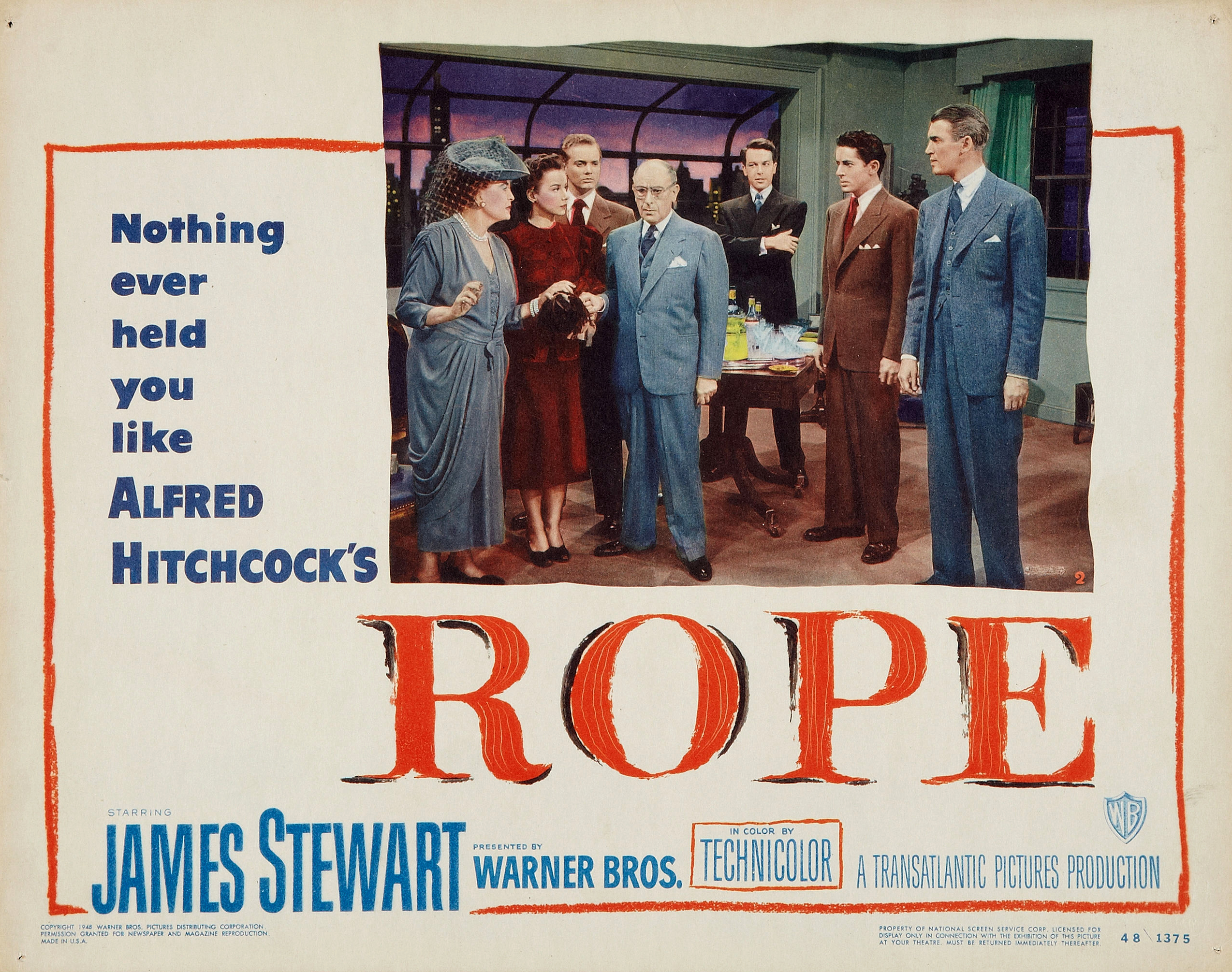
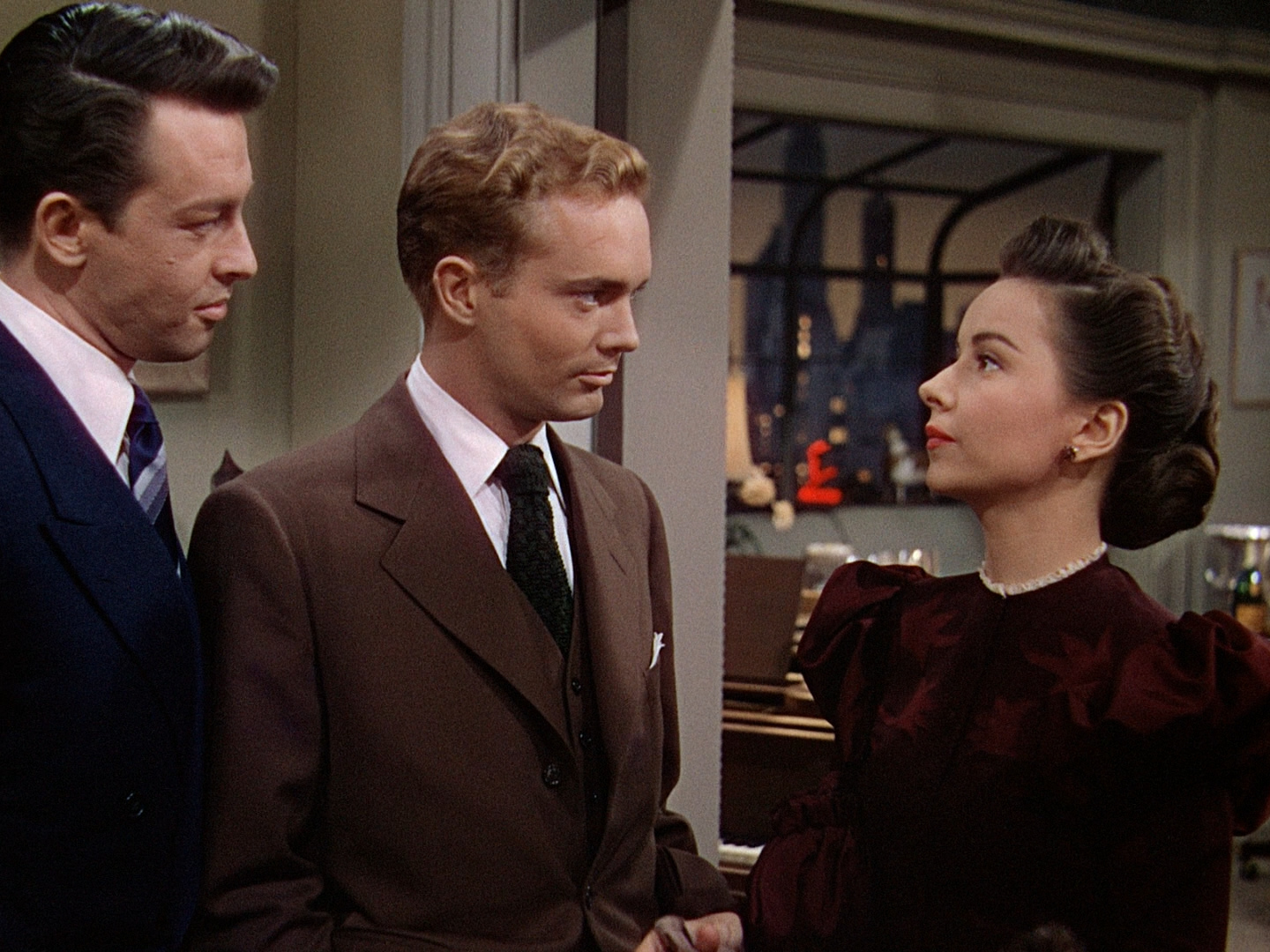
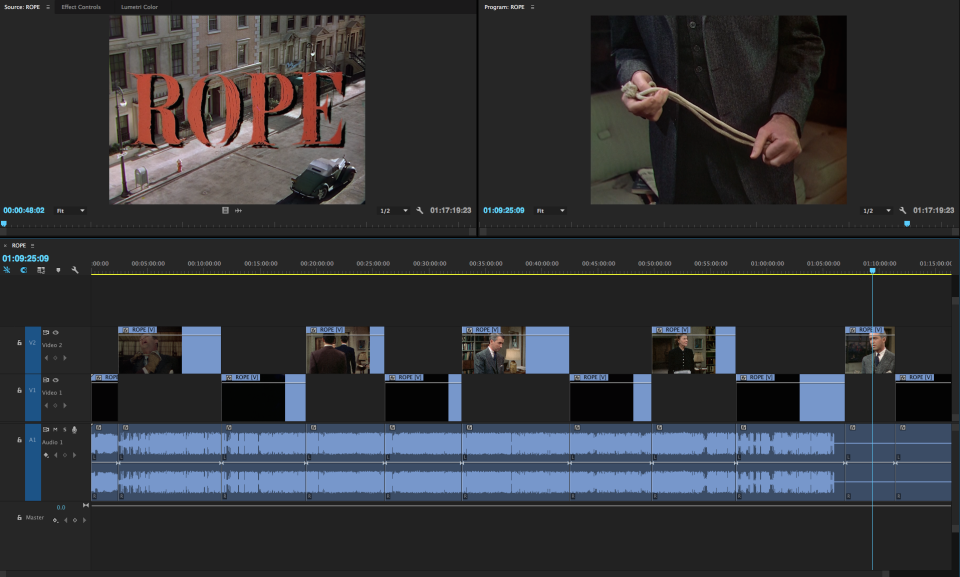
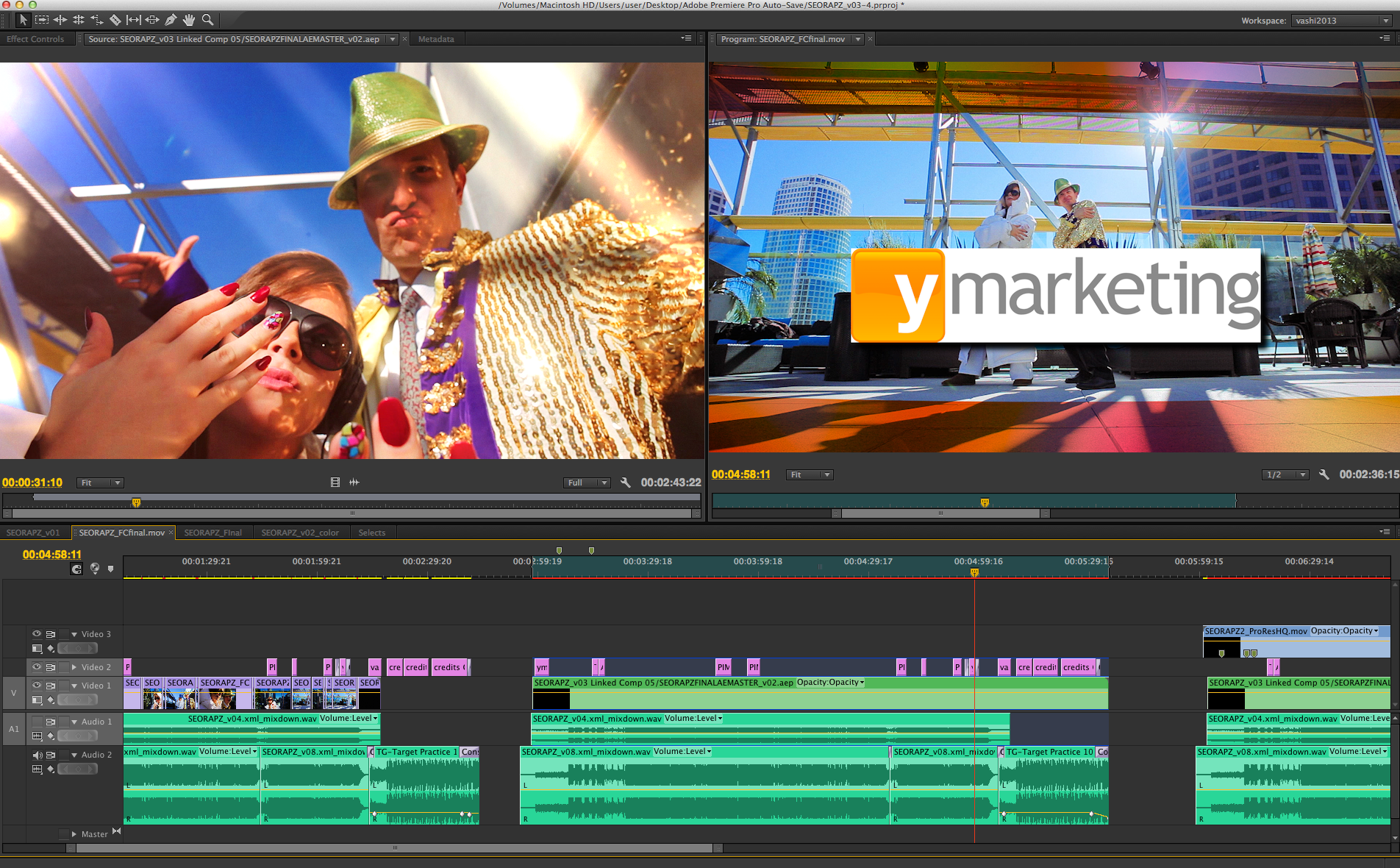
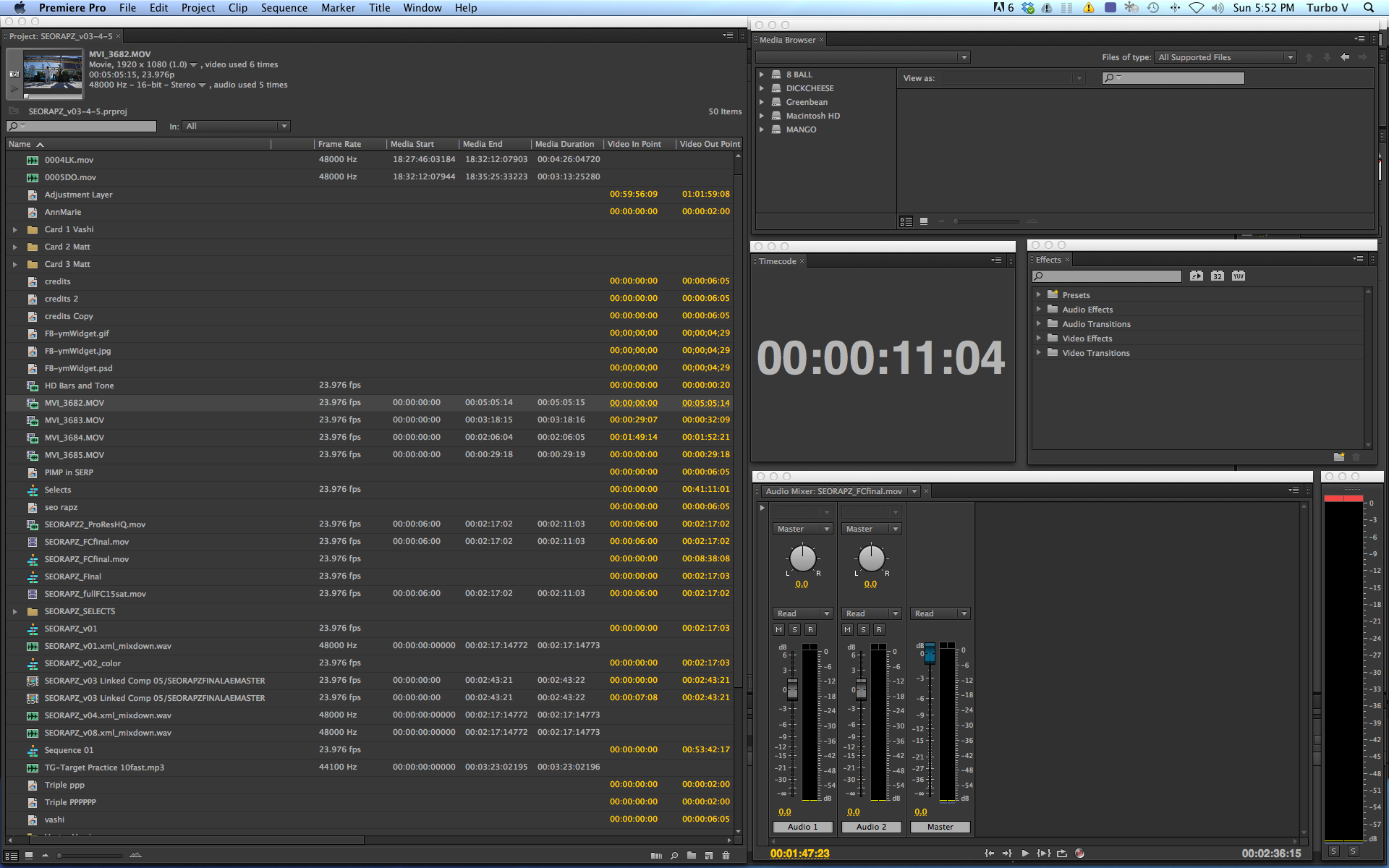
There are 12 comments
[…] https://vashivisuals.com/alfred-hitchcock-hiding-cuts-rope/ Shared […]
Hitchcock created and defined the Thriller. See scenes from several of his movies illustrated around his haunting portrait at http://dregstudiosart.blogspot.com/2013/08/the-master-of-suspense.html
[…] https://vashivisuals.com/alfred-hitchcock-hiding-cuts-rope/ Share this:GoogleEmailPrintFacebookTwitterTumblrPinterestPocketLinkedInStumbleUponRedditDiggLike this:Like Loading… Leave a comment […]
[…] I always knew that some of the cuts were hidden by camera wipes…but never realized there were 5 ha… […]
[…] Hitchcock made “Rope” With Only 10 Cuts Posted on October 10, 2013 by chimesfreedom Vashi Nedomansky has put together a video examining Alfred Hitchock’s movie Rope (1948), which starred Jimmy […]
[…] edits in the film (for everyone interested in knowing how the lady is sawed in half) and written an accompanying exploration of the simple, clever […]
[…] edits in the film (for everyone interested in knowing how the lady is sawed in half) and written an accompanying exploration of the simple, clever […]
[…] seguir, você vai poder acompanhar um vídeo editado pelo site vashivisuals.com, revelando o aspecto mais curioso da experiencia de Hitchcock nesse fime: os cortes […]
Silent House is a really good recent example. Everything appears to be a single shot; I believe there are 7 – 10 cuts. Some of them appear to be done during fast camera pans, but I thought it was really well done.
[…] Alfred Hitchcock: Hiding the Cuts in Rope – Rope is often claimed to have no editing as it is supposedly one long take. This article and video go into where the cuts are hidden. They’re old-school techniques that are still very usable today. ← Links of Note When Corporate Videos Go Bad: Everyone Wants to be a Rock Star → […]
[…] If you haven’t seen the film before, definitely carve out an hour and a half of your day to check it out and try and spot the edits yourself. Or you could check out this video that Vashi uploaded today that pinpoints all 10 in Hitchcock’s film. […]
[…] During his youthful moviegoing, one of the first American directors Truffaut encountered was Alfred Hitchcock, through his 1948 film Rope. At the time, Hitchcock wasn’t garnering the rave reviews he would for films like Strangers on a Train or Rear Window, but Truffaut was immediately captivated, recognizing in the English director’s work the qualities he loved most about film: the nod to film noir, the auteur’s view, the references to film inherent in Hitchcock’s technique. For Hitchcock, Rope was an “experiment,” his effort to produce a film that mimicked real time through the use of what appeared to be a single continuous shot; that is, the action in the film never ends at the close of a scene, but continues uninterrupted, an illusion created with a series of disguised cuts. […]